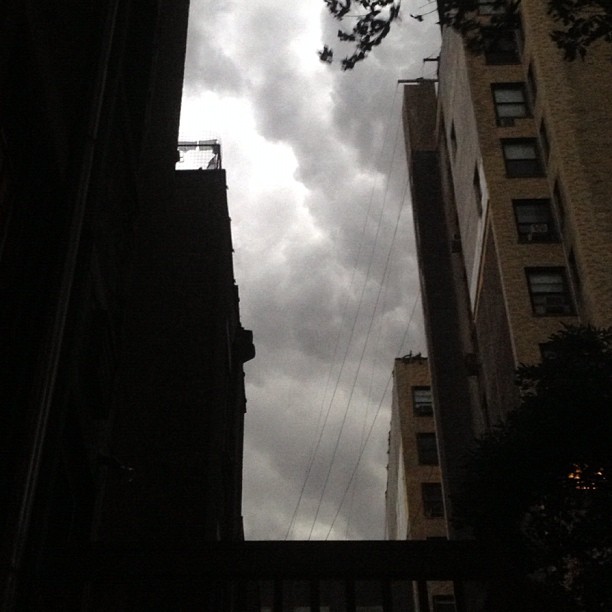
Storm clouds move in over New York City during yesterday’s derecho.
Remember that big hole in the ozone over the South Pole? Beginning in the 1980s, we plugged it up. And we often look to that success as a guide for how to save the environment. Identify the problem, develop a solution, enact international policies that address it. By severely limiting chlorofluorocarbons (CFCs), we preserved the ozone layer, which is critical to blocking harmful ultraviolet radiation.
We didn’t actually eliminate all CFCs from the atmosphere. There are still CFCs up there, combining with oxygen in the ozone layer and breaking it down. But the combination has generally been stable.
Until climate change came along. From The New York Times:
Strong summer thunderstorms that pump water high into the upper atmosphere pose a threat to the protective ozone layer over the United States, researchers said on Thursday, drawing one of the first links between climate change and ozone loss over populated areas.
Good thing there haven’t been any strong summer thunderstorms lately!
A loss of ozone means that far more ultraviolet radiation could blanket the United States during summer months, increasing incidences of skin cancer. Here’s how researchers believe storms lead to depletion:
… Harvard University scientists reported that some storms send water vapor miles into the stratosphere — which is normally drier than a desert — and showed how such events could rapidly set off ozone-destroying reactions with chemicals that remain in the atmosphere from CFCs, refrigerant gases that are now banned. …
While there is conclusive evidence that strong warm-weather storms have sent water vapor as high as 12 miles — through a process called convective injection — and while climate scientists say one effect of global warming is an increase in the intensity and frequency of storms, it is not yet clear whether the number of such injection events will rise.
“This problem now is of deep concern to me,” said one researcher. “I didn’t believe it at first,” said another. “The rate of these reactions was shocking to us,” said the first one, followed by, “It’s irreversible.”
Our efforts to protect the ozone layer over the poles were largely successful. If this research is accurate, it’s not clear how we might once again ward off ozone depletion — this time, directly over our heads.



